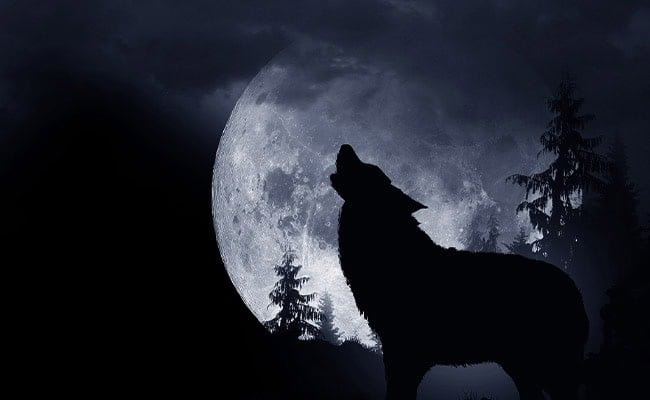January Birth Month Symbols And Fun Facts

Welcome January! It’s a time for new aspirations and fresh beginnings. Enjoy this remarkable month to the fullest by joining the Farmers’ Almanac as we take a deep dive into the many symbols for January birth month, including flowers, stones, herbs, bird of the month, zodiac signs, and more! Ahead you’ll also find January fun facts and trivia! Discover many powerful characteristics and special treasures that this month holds and get inspired! Don’t forget to share your favorite January symbols (and photos) in the comments section below.
January Birth Month Symbols
The January birth month graces us with the long-lasting bloom, the carnation, which stands for unconditional love, and the captivating garnet birthstone, a stone believed to inspire passion, courage, and faithfulness. Capricorn and Aquarius, serve as the month’s zodiac guardians, offering intelligence and innovation. January’s bird of the month, the wise owl, brings intuition through wintry days to enrich your journey. Peppermint, fennel, and other bountiful herbs provide nurturing essences in recipes and self-care practices.

January Birth Month Flower: Carnation
Each birth month has a flower associated with it. January’s birth flower is the carnation which comes in shades of pink or pinkish-purple. But thanks to better growing techniques and the work of flower farmers, we now have carnations in many colors. These flowers come in bright reds, deep burgundy, white, yellow, cream, peach, green, and even mixed colors or patterns.
In Christian folklore, red carnations came from the Virgin Mary’s tears when she saw her son Jesus carrying the cross. One story says red carnations grew where Mary’s tears fell. Another says they appeared as she cried at Jesus’ crucifixion. Because of this, red carnations are sometimes called “Mary’s flowers” and can represent sadness or a mother’s grief.
Related: Birth Month Flowers: Plant A Family Garden
The word “carnation” might come from the Latin word “corona,” which means “crown,” because in old Rome, people used carnations in crowns worn at special events. The scientific name “dianthus” comes from Greek and means “heavenly flower” or “divine flower,” showing the flower’s role in religious events and stories.
The name “carnation” might also be linked to the idea of God becoming human, which is why they might be called “God’s flowers.”
In Greek myths, carnations, especially red ones, have a heavenly meaning. The story goes that when Aphrodite, the goddess of love, was sad about Adonis, the god of beauty and desire, dying, she made white carnations. They turned red from Adonis’ blood.
Carnations are also linked to the zodiac sign Capricorn, which is from December 22 to January 19. The strong nature of carnations stands for a long life and being faithful, which are important to Capricorns.
Read more about carnation symbolism

January Birthstone: Garnet
The official birthstone for the month of January is red garnet. The word garnet derives from words meaning “deep red” and seed, possibly because it resembles a pomegranate seed. During the Middle Ages, deep red garnet jewelry was a favorite among nobility and clergy. This gemstone, recognized by its deep red color, has a rich history associated with promoting wellness, good health, and keeping you safe while traveling.
Related product: January Birthstone Garnet Necklace
The garnet is referred to as the “Karma Stone.” This nickname comes from a widespread belief that wearing this gem while performing acts of kindness can attract good luck and fortune to the person wearing it. Garnets are also said to symbolize trust, loyalty, and compassion. The garnet stone is thought to have healing properties. Soldiers in ancient civilizations who were injured or wounded in battle would use garnets in hope that the gemstone would aid in their recovery.
Related: See all birthstones by month
January Colors: Red, White, And Blue
January’s colors sound a lot like they should be July’s: red, white, and blue! Dark red is the color of garnet, January’s birthstone, mentioned above. Adding red to your interior decor during the winter months may help rejuvenate your home. White symbolizes a blank page and fresh start to the new year. Light blue symbolizes snowfall and winter.

Full Wolf Moon
The first full moon of the year is the Full Wolf Moon, named for wolves who howl more during winter months. This year the full wolf moon reaches peak illumination Thursday, January 25, at 12:54 P.M. EST. Wolf moon is also known as Ice Moon, Snow Moon, and Yule Moon.
Learn more about the Full Wolf Moon
Related: 2023-24 Full Moon Dates And Times
Zodiac Signs: Capricorn and Aquarius
Two zodiac signs are associated with the January birth month: Capricorn and Aquarius.

Capricorn (December 22-January 19)
The last earth sign of the zodiac, Capricorn is represented by the sea-goat, a mythical body with the body of a goat and the tail of a fish. Capricorns are strong, patient, and focused individuals, always ready to put in the hard work required for the long haul. They aren’t in it for the quick win, preferring to invest their time and energy into building something that will last for years to come.
Related: What Is Your Zodiac Sign?
Capricorns thrive on challenging work and are capable of making sacrifices to reach their goals. They have a very practical and grounded approach to life, without being swayed by fantasies or illusions. Capricorns can sometimes come across as stern and emotionally detached, prioritizing rationality over emotions, which can sometimes make them unapproachable or distant.
Capricorns can achieve a more balanced life by acknowledging and connecting with their emotional side. Finding a balance between professional ambitions and personal emotions can lead to a more fulfilling and well-rounded life.
Related: Learn more about Capricorn
Aquarius (January 20-February 18)
Despite the name “aqua” in its name, Aquarius is the last air sign of the zodiac. Creative, innovative, and progressive, Aquarians are represented by the water bearer. They can seem detached and distant, driven by reasoning and concrete evidence, rather than others’ emotions. What can be mistaken as apathy is a deeply analytical and logical sense of the world, allowing Aquarians to form unique perspectives on human relationships and society. They desire diverse social interactions, helping to enrich their understanding of the world.
Aquarians’ eccentric and inventive nature allows them to think outside the box, leading to unique approaches and solutions. While this may be someone you want on your team, their overly focused viewpoint can sometimes make them quite stubborn. This inflexibility is a double-edged sword, as their innovativeness can also lead to conflict when they are challenged. Despite these challenges, their unique approach to life makes them one of the most interesting zodiac signs.
Related: Learn more about Aquarius
January Herbs of the Month
The idea of connecting herbs with zodiac signs comes from the thought that the qualities of the herbs match the personality and traits of the zodiac signs. People who study astrology and herbs believe that herbs can have a special energy or healing power that goes well with a certain zodiac sign.
For instance, some herbs are linked to a zodiac sign because they are thought to support the good qualities of people born under that sign or help with the sign’s challenges.
- Capricorn herbs (Dec-Jan): Peppermint, rosemary, tarragon, caraway, chamomile, and marjoram.
- Aquarius herbs (Jan-Feb): Queen Anne’s lace, clove, comfrey, rosemary, fennel, violet, and valerian.
January Birth Month Bird: Owl
January’s bird is the owl. People born in January are thought to have a thoughtful, wise, and quiet nature, as symbolized by the owl. Owls were once associated with Athena, the goddess of wisdom and prophecy. Due to their keep senses and nocturnal nature, they are frequently seen as symbols of knowledge and intuition.
Related: 8 Birds That Take The Night Shift
Unlike many birds, owls are primarily solitary creatures, more active during the night than day. The owl is quite formidable and has vision and hearing unmatched in the animal kingdom. Owls have a distinct upright posture, standing tall and proud, equipped with sharp talons for hunting. Owls have a wide-ranging diet, but primarily feed on small mammals, insects, other birds, and some even catching fish. Owls have made homes across the globe, inhabiting every region except the polar ice caps and a few isolated islands.
January Fun Facts:
- A group of owls is referred to as a “parliament”? This term, reminiscent of the political assembly, suggests wisdom, order, and organization, reflecting the common symbolic association of owls with wisdom in many cultures.
- Owls are known for their incredible ability to rotate their heads up to 270 degrees, allowing them to survey their surroundings with remarkable precision. So, not only are they symbolically linked with wisdom, but their anatomy also showcases a unique adaptation that adds to the mystique of these nocturnal creatures.
Related: Nine Owl Sounds to Listen For (via ABCbirds.org)
What Does “January” Mean?
January was named after Janus, the Roman god of changes and transitions, doorways, and new beginnings. Janus is often represented with two faces, one to see each the past and future. How fitting for the first month of the year. Romans would give gifts and make promises to Janus to forgive them for past wrongdoings and bless them for the year ahead.
Related: How Did The Months Of The Year Get Their Names?
January Fun Facts:
- The similar Latin word Janua, which means “door” or “entryway,” is where we get the word janitor from. It used to mean someone who looks after a door or a gatekeeper before it came to mean “cleaner.”
- January wasn’t always the first month of the Roman year. In the old Roman calendar, the year started in March. It was only in 153 BCE that January became the first month, which matched the idea of Janus and made it the gateway to new starts.
January Calendar
The Roman calendar at first had ten months, starting with March to match the time when day and night are equal and when farmers start to plant seeds. January and February weren’t part of it until about 700 BCE when Roman King Numa Pompilius added these two cold months. January, which came after December, had 29 days back then. In 153 BCE, January moved to the first spot of the year, taking the place of March.
Later on, Julius Caesar noticed some problems with the calendar and added ten days to the year, including an extra day every four years and making January have 31 days. The Julian calendar, based on the sun, had issues staying in line over time, which led to the creation of the more exact “Gregorian” calendar in 1852 A.D. Nowadays, we still use the Gregorian calendar, which is based on how long it takes Earth to go around the sun and includes leap years.
January Fun Fact:
- When changing to the Gregorian Calendar, they had to fix a ten-day error from the Julian Calendar. The fix was straightforward but fascinating – they just changed the date. People went to sleep on October 4 and woke up on October 15 as if by magic.
- During the switch from the Julian to the Gregorian calendar, some places didn’t want to change to the new system right away. This led to a funny situation where different places used different calendars, making it hard to figure out dates for things. It took years or even hundreds of years for the Gregorian calendar to be accepted everywhere. So, historical records from different places might show different dates during this time when calendars were changing.
What can you do with your 2023 calendar?
You can reuse your 2023 calendar in 2034, 2045, 2051, 2062, 2073, and 2079. Don’t want to wait to reuse old calendar? Frame some of the photos for wall art, cut out the photos and turn them into greeting cards or postcards, cut them out to make gift tags, or turn them into endless art projects.
January Fun Fact:
- Ethiopia is the only county in the world who has a 13-month calendar. While the rest of the world adopted the Gregorian calendar, Ethiopia maintained its Julian roots, a decision based on its traditional and spiritual framework. The Ethiopian calendar holds an extra month, Pagume, a brief but significant period comprising five days in a typical year and six in a leap year. This 13th month ensures that the calendar doesn’t fall out of sync with the seasons. It also holds as a time of finalizing plans, settling debts, and quiet reflection before the cycle begins again.
January Weather Lore
January is usually the coldest month of the year, wrapping everything in a cold hug. Getting ready for the different weather changes that this month often has, our dependable long-range weather predictions are here to help you navigate the cool details.
January is full of old weather tales, with sayings and ideas that people have shared for a long time. From guesses about how much snow will fall to traditional thoughts on how animals act, these stories add a fascinating touch to our knowledge of January’s weather secrets.
Folklore says that the first twelve days in January predict the rest of the year, with each day predicting the corresponding month. If this superstition holds true, the weather on New Year’s Day predicts what the rest of January looks like.
Related: How To Predict The Weather With An Onion
New Year’s weather folklore looks to the wind, particularly at sunrise, to predict the coming weather. Allegedly, if the wind blows from the south the next year will bring prosperity. But if it’s coming from the north, get ready for a year of bad weather. Meanwhile, wind coming from the east brings famine and calamities. If the wind is from the west, the year will bring plenty of milk and fish.
Related: Snow Myths And Odd Facts
A thunderstorm during the winter is known as a thundersnow, and while rare, they do occasionally occur. According to Folklore, if it thunders in January, it will snow seven days later. Fog is January is said to bring a wet Spring.

January Night Sky
Catch A Shooting Star! – The Quadrantid Meteor Shower
Kick off the New Year with a beautiful light show. The first major meteor shower of the year, the Quadrantids, will take place in the early January sky and is considered to be the best annual meteor shower. Under the right conditions you may see anywhere from 60-200 shooting stars during peak hours.
Related: Monthly Night Sky Guides for Stargazers
Gardening: Start Planning
It may seem like a long way off, but January is a great time to start planning your garden for the upcoming season. Don’t Wait! Plan Your Garden Now – Here’s How!
Related: Gardening By The Moon Calendar
Recipes For January
Stay warm and healthy with some of these Farmer’s Almanac favorites:
Roasted Pumpkin, Carrot, and Turmeric Soup
January Trivia
- Alaska officially became the 49th state on January 3, 1959.
- Ellis Island opened on January 1, 1892, allowing immigration for over 20 million people.
- President Abraham Lincoln issued the Emancipation Proclamation on January 1, 1863.
Join The Discussion
Were you born in January?
Which symbols for January are your favorite?
Do you know any interesting January fun facts, symbols, or folklore not mentioned above?
Share with your community here in the comments below!




